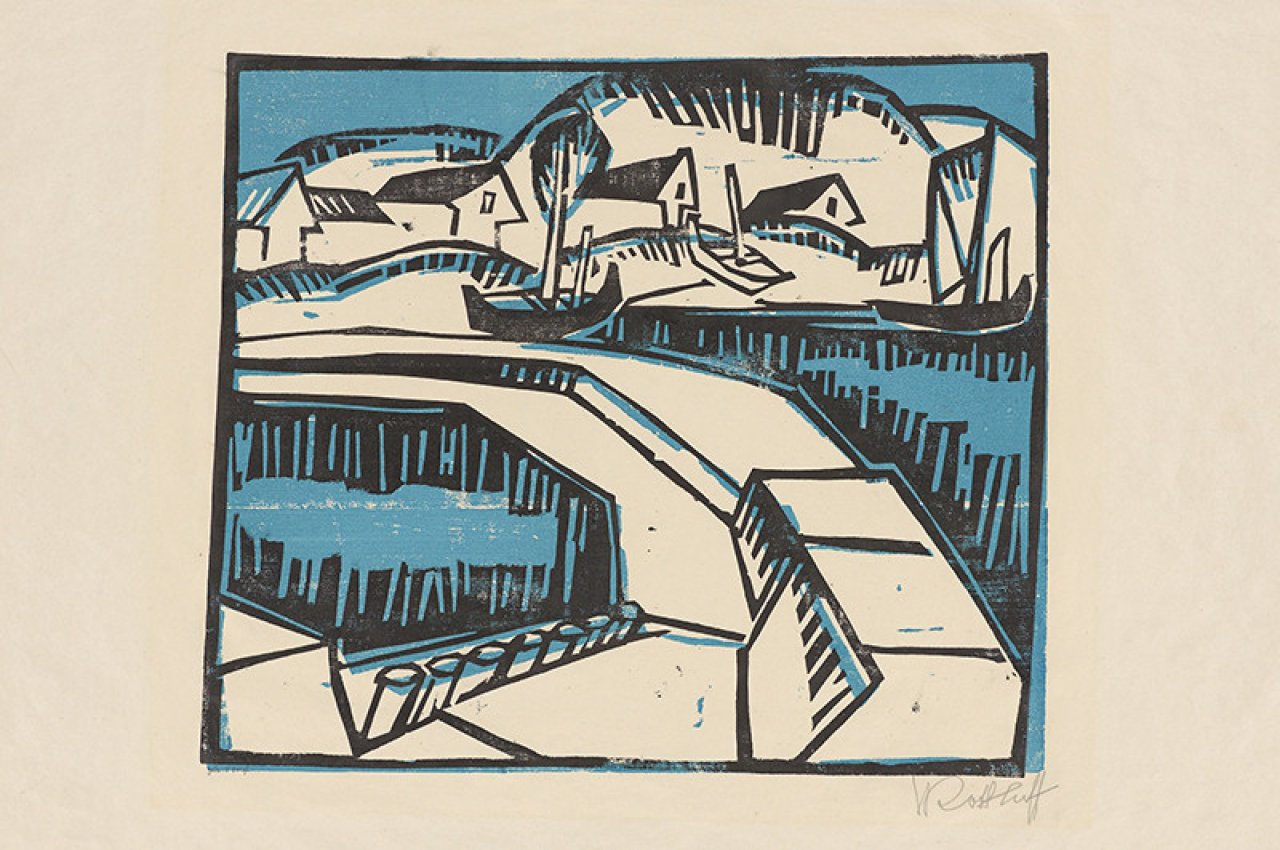There are many reasons to collect art. Some continue a tradition begun by their parents or grandparents. Others collect for pleasure, out of curiosity or ambition, or for the fun of being in the game. Probably all of them will find it hard to say when and under what circumstances they acquired their first work. Only those driven to collect by pure passion are likely to remember exactly how it all began. Leslie Garfield (1932-2022) can still recall every detail of that strange day in the fall of 1955 almost seventy years later.
In the mid-1950s, the native New Yorker was stationed as a GI in the American garrison in Würzburg. One day, he decided to drive to Munich to visit the museums with friends, a German couple. When they got there, the museums were still closed, so they looked around, eventually ending up in front of the display window of an art gallery. They went inside – and that’s when it happened. Initially, Leslie Garfield could not see the print in question, since it was on an easel facing away from him. But then it hit him. Garfield recounted the story to Susan Tallman, a journalist and specialist in graphic art, in 2021: “I was bowled over. I couldn’t take my eyes away; something had come over me. I had to look at the picture again and again.” Leslie naturally also recalled what happened next: “I enquired with the lady who ran the gallery about the print and asked how much it cost (55 US dollars). That was too much for a humble private, I felt, so I went to the museum with my friends.”
On the way back home in the car, he could not get the painting out of his head. “I told myself: you liked it, didn’t you? You’ve got the money. 55 dollars. You can afford that.” So two weeks later, he drove to Munich once again and bought the work: Erich Heckel’s woodcut print “Gegner” from 1912, which had been created as an illustration for a German edition of the novel “The Idiot” by Fyodor Dostoyevsky.
Leslie´s wife Johanna, whom he married in 1960, loved art just as much as he did, and she, too, became a passionate collector. She directed her (and his) interest towards the British Vorticist school, the Provincetown Art Colony on Cape Cod, and contemporary artists like David Hamilton, Diether Rot, Jasper Johns, David Hockney or Grayson Perry.
When Jo Garfield passed away in 2021 at the age of ninety, while preparations for the exhibition “British Prints, 1913 to 1939” at the Metropolitan Museum of Art were ongoing, the Garfields’ collection had grown to over 6,000 works. Leslie and Jo Garfield had close ties to the Metropolitan Museum thanks to their many generous donations. The “Modern Times” show was intended to celebrate the acquisition of 700 works by British artists, which would make it “one of the leading institutions worldwide in the field,” according to its Director Max Hollein.
Join us in discovering the exciting world of German Expressionism and find your favourite artwork in the Leslie & Johanna Garfield Collection.
All works from this auction will be on view until 24 February in Berlin at Fasanenstrasse 25:
Monday to Friday, 10am to 6.30pm
Saturday, 11am to 4pm
Grisebach
Fasanenstrasse 25, 10719 Berlin
T +49 30 885 915 0 auktionen@grisebach.com
Talk „Master Prints of the Expressionists – Neue Perspektiven“ at Grisebach on 20 February.
FAQs: What does Online Only actually mean?


